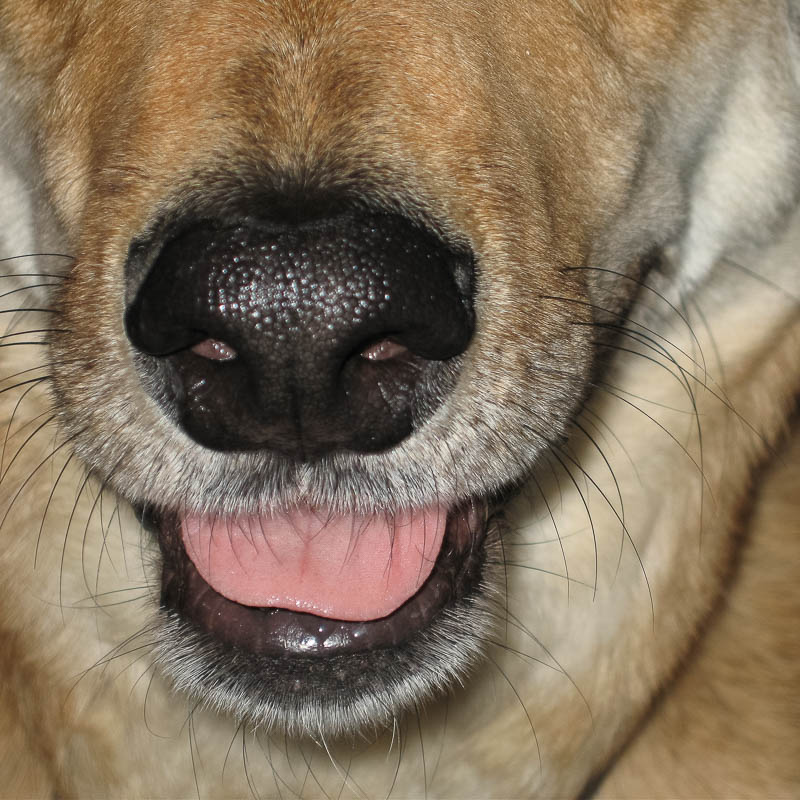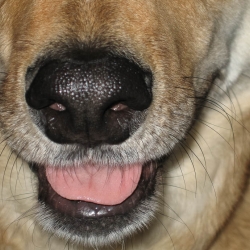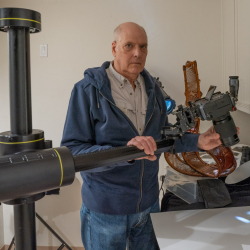Home > Topics > Printing > Printing Colour Management > What Does a Printer Profile Actually Do?
What Does a Printer Profile Actually Do?
-
AuthorTopic: What Does a Printer Profile Actually Do? Read 44201 Times
-
Printing Colour Managementon: April 12, 2020 at 8:17 am
This question exposes the fact that I have been printing, using color management and making my own profiles for many years yet have no idea how it really works.
In regard to printer profiles, I do not know what they are supposed to do. Without thinking much about it, I always had the perception that these profiles map and correct color as it comes from the editing software to the printer in order to print the “correct” color on that specific paper. If that was true, then a perfect profile applied to a file that had no out of gamut colors would require no soft proofing because the “perfect” profile would correctly map those in-gamut colors to the prints. And, Bob’s Your Uncle. This is clearly not the case. Here is an example of an image with almost no out of gamut colors, yet one that needs adjustment to print correctly on Hahnemuhle’s William Turner:

With my current setup, I have found soft proofing to be incredibly reliable. But if my perception above was correct, soft proofing would not be necessary if there are no of out of gamut colors in the image. Clearly, the profiles I am using are “good enough” because my soft proofing exercise is quite successful. That means the profile is doing a good job reporting to the software (LR) what the colors and contrast range will be in the print. The profile is also doing a good job printing what it told the software it was going to print. What the profile is not doing, however, is correcting color in any sort of “proactive” way (at least color that is in-gamut).
I do have Jeff Schewe’s book, The Digital Print. On page 72 he describes printer profiles as having two components, PCS to output transforms and PCS to display space transforms.
After thinking about all this, I realized my perception of what printer profiles do cannot be right, especially the part about correcting color that is in-gamut. So, here is my modified perception of what a printer profile does:
- It records / documents how specific colors are reproduced on the paper.
- It reports back to the software being used how those colors will be reproduced on the paper.
- It defines the available gamut of the printer-paper-ink combo, so the software knows when and how to move colors that cannot be printed into colors that can be printed depending on the selected rendering intent. In the case of relative colorimetric, that is a pretty straight forward exercise of mapping out of gamut colors to the edge of the color space. In the case of perceptual, that is a more complicated squishing of the whole file.
That’s it. What is missing from the above list is the task associated with “correcting” color that is in-gamut. This fits much better with my experience when soft proofing. Is it anything close to what printer profiles actually do?
Dave
How glorious a greeting the sun gives the mountains! - John Muir
https://www.davechewphotography.com
Find legacy Schneider-Kreuznach Apo-Digitar lens data here: https://www.davechewphotography.com/skdata/-
This topic was modified 4 years, 3 months ago by
 Dave Chew.
Dave Chew.
Re: What Does a Printer Profile Actually Do?Reply #1 on: April 12, 2020 at 9:23 amWe need profiling because all devices see device-dependent RGB or CMYK colour differently, while the colours need to be brought to a common standard of how we perceive them to successfully obtain a print that looks like what we saw on the monitor. The profiling process for making prints requires two profiles. The two profiles are a source profile and a destination profile (where the colours are coming from to where they are going). The profiles describe behaviour, they do not alter it. These profiles describe how the devices interpret RGB or CMYK numbers along with their corresponding device-independent L*a*b* numbers. L*a*b* is the common device-independent language used for defining and measuring colour. The profiles connect through the profile connection space (PCS) in the computer operating system’s colour management module (CMM). The PCS is the yardstick for defining and measuring perceived colours, using either CIE L*a*b* or CIE XYZ colour spaces. The source profile tells the CMM what colours the image file contains, and the destination profile tells the CMM what new set of signals is needed to reproduce those colours in the print; the CMM converts values from source colour space to the PCS and from the PCS to the destination space (the printer). If you don’t profile both your monitor and your printer, this system doesn’t have the information about device behaviour it needs to interpret colour correctly from one device to other – regardless of whether colours are in-gamut or out of gamut, and you will most likely not achieve an accurate result. I have parsed much of this from “Real World Color Management” Second Edition by Fraser, Murphy and Bunting (and hope I haven’t misrepresented anything in the process – it’s a long discussion condensed here to a Forum post in order to get at the essentials). There is a whole lot more to all this in that book, which is a standard reference on the subject and well explained, so I recommend you obtain a copy if you have further interest in pursuing this topic.
Re: What Does a Printer Profile Actually Do?Reply #2 on: April 12, 2020 at 9:58 amIn regard to printer profiles, I do not know what they are supposed to do. Without thinking much about it, I always had the perception that these profiles map and correct color as it comes from the editing software to the printer in order to print the “correct” color on that specific paper. If that was true, then a perfect profile applied to a file that had no out of gamut colors would require no soft proofing because the “perfect” profile would correctly map those in-gamut colors to the prints.
That’s not true. The reason is that the state of viewer adaptation needs to be at least close in both the monitor and print viewing cases. Usually, that requires some pretty contrived and exacting controls of both.
There’s another important point: the spectra of the print and the monitor will be far different. The calibration and profile-making process assumes a metameric match, which may obtain under some illuminants and not under others.
Also, the illumination and viewing geometry of the calibration process may not match that of the print viewing environment.
Absolute illumination levels may also be different.
You may not be as blue-deficient as the 1931 standard observer.
The 2-degree field of the 1931 SO may not be appropriate for your subject matter.
For all these reasons, and several more, I think that hard proofing is necessary for critical work.
Jim
Re: What Does a Printer Profile Actually Do?Reply #3 on: April 12, 2020 at 10:29 amThank you, Mark. That is helpful. I just purchased Bruce’s book. It does seem my modified description is at least somewhat more accurate in describing the process.
Dave
How glorious a greeting the sun gives the mountains! - John Muir
https://www.davechewphotography.com
Find legacy Schneider-Kreuznach Apo-Digitar lens data here: https://www.davechewphotography.com/skdata/Re: What Does a Printer Profile Actually Do?Reply #4 on: April 12, 2020 at 10:53 am…For all these reasons, and several more, I think that hard proofing is necessary for critical work.
Jim
Thank you, Jim. My description was more of a theoretical one to explain the limits of my understanding, not so much a practical one. I agree on hard proofing, and subscribe to Charlie’s, “Print early, print often” mantra. I will frequently make a print then come back to it over several days, circling things I don’t like and writing comments re what to do right on the paper.
I’m verifying what was probably obvious to everyone else: printer profiles don’t correct for color / density limits, at least for in-gamut situations; they just define and report what the output device will do so that some combination of software and user adjustments can make appropriate modifications. As stated in Bruce’s book: “But calibration and profiling are separate processes with different goals. When you profile, you simply record the response and encode it in a profile. When you calibrate, you use the stimulus and response to actually change the device’s response.”
Dave
How glorious a greeting the sun gives the mountains! - John Muir
https://www.davechewphotography.com
Find legacy Schneider-Kreuznach Apo-Digitar lens data here: https://www.davechewphotography.com/skdata/Re: What Does a Printer Profile Actually Do?Reply #5 on: April 12, 2020 at 11:29 amTo be more specific, I will use colors in Mark’s recent article as an example. Let’s say I feed a printer a swatch with the equivalent lab values 70/20/60. I read that with a spectro that records 71,21, 61. I used to think the created printer profile would take note of that difference, and when used would apply some adjustment to the 70/20/60, like say 69/19/59. Then the printer would actually print a swatch closer to 70/20/60.
Now, my perception is the printer profile doesn’t do much of that, if at all. It simply records that condition, and reports it back to the software. When I soft proof using that profile, the soft proof will tell my monitor to display 71/21/61. Again, assuming 70/20/60 is in-gamut.
The reason I’m wondering all this is because it manages my expectations. If I print a file that has entirely in-gamut colors with a so-so profile, then print the exact same file using a great profile, the two printed images won’t look any different.* The soft proof of those two profiles might look very different, but without making any adjustments to the file in between, the prints will look the same.
Dave
*I am not convinced this is true. Mark has written many great articles showing different dE’s depending on the profile used: Canned vs Mark’s roll-your-own version. So, I’m still in the weeds.
How glorious a greeting the sun gives the mountains! - John Muir
https://www.davechewphotography.com
Find legacy Schneider-Kreuznach Apo-Digitar lens data here: https://www.davechewphotography.com/skdata/Re: What Does a Printer Profile Actually Do?Reply #6 on: April 12, 2020 at 12:37 pmProfiles don’t correct anything. Profiles do as the name implies: they fingerprint device behavior. They are used to convert data from one color space into another with options on how to do so for gamut mismatching (Gamut compression or Gamut clipping). Profiles know nothing about images in context. Profiles ‘see‘ your image one pixel at a time. And they treat one pixel at a time so to speak. This is why humans soft proof and pick a rendering intent to see color in context. To select the preferred rendering intent. To produce post conversion edits if desired.
ALL printer profiles are based on extrapolating data. In a prefect world, we’d measure 16.7 million device values (not all being colors and many being the same color but that’s a different story). It would take a very long time to measure all those color patches and the profile would be huge in size. So all printer profiles use a far lower number of measured color and extrapolate the results for all device values. Some do this better than others.
Colorimetrically ‘correct‘ or matching numbers by themselves do NOT mean pleasing or ideal color. Because profiles don’t know squat about images or colors in context.
There are NO rules in how a perceptual rendering intent is produced. This is utterly up to the profile maker to decide. Like there is no ideal and accurate transparency film. Velvia is no more ‘accurate’ than Kodachrome or Ektachrome, or Agfachrome. Film manufacturers provide a rendering they believe their customers will prefer. This is the same with profiles built and setting used for a Perceptual Rendering.
Accurate color equals Lab numbers in equal Lab numbers out and the difference when they are greater than visually visible is provided in dE. A capture can’t be said to be accurate unless all the colors in the scene are measured at the scene, recorded and reported then compared to the values in the capture. At this time, a print isn’t in the equation.
Colors printed vs. captured again can be produced but there are all kinds of issues (like metameric failure, lighting of the print and the surround, optical illusions) that can provide an accuracy report that doesn’t jive with what we see on that print.
Colorimetry and the dE testing is about color perception. It is not about color appearance. The reason why viewing a print is more valid than measuring it is because measurement is about comparing solid colors. Color appearance is about evaluating images and color in context which measurement devices can’t provide. Colorimetry is about color perception. It is not about color appearance. Colorimetry was never designed as a color appearance model. It was never designed to even be used as an interchange space between device dependent color models. It’s not designed for imagery at all. Colorimetry based on solid colors in very specific ambient and surround conditions.
Lastly I’ll add there is a difference between Luminance and Lightness. Lstar is Lightness which is a perceptual attribute. Lightness is a perceptually scaled component of color, the axis seen in Lab (Lstar) from light to dark. It IS the L in HSL.
Luminance is measurable.
Brightness is the perception of Luminance.
Lightness is perceived Brightness relative to some average level in an image or environment. Video showing the differences between Lightness and Brightness: https://www.youtube.com/watch?v=tq2y2BseUaE&feature=youtu.be
Author “Color Management for Photographers" & "Photoshop CC Color Management" (pluralsight.com)”
-
This reply was modified 4 years, 3 months ago by
 Andrew Rodney.
Andrew Rodney.
Re: What Does a Printer Profile Actually Do?Reply #7 on: April 12, 2020 at 8:20 pmProfiles don’t correct anything. Profiles do as the name implies: they fingerprint device behavior…
Andrew,
Thank you very much for the detailed reply; very helpful. I have much yet to learn. This is all the fault of my 7900 now beginning to fail after 10 great years. I’ve been investigating what to do for a replacement, and found myself down this color management rathole.
I finally decided on the Canon 4100.
Dave
How glorious a greeting the sun gives the mountains! - John Muir
https://www.davechewphotography.com
Find legacy Schneider-Kreuznach Apo-Digitar lens data here: https://www.davechewphotography.com/skdata/Re: What Does a Printer Profile Actually Do?Reply #8 on: April 13, 2020 at 1:49 pmJust sharing a few more short explanations. Here’s a quick reason why Rel Col would have some color shift:Here’s a longer explanation of why we don’t think of a profile as “correcting” color:-
This reply was modified 4 years, 3 months ago by
Patrick Herold. Reason: unnecessary html
Re: What Does a Printer Profile Actually Do?Reply #9 on: April 16, 2020 at 5:12 pmIn addition to what Andrew et all have explained so clearly, when softproofing in Photoshop of Lightroom, both will not show out of gamut in the image in the dark areas. A simple trick is to switch to perceptual. If the appearance of the image changes, there is some color out of gamut, even if the highlight does not show.
Re: What Does a Printer Profile Actually Do?Reply #10 on: April 20, 2020 at 7:19 pmThank you all for your responses. Shows how much I don’t know. Here is more context to the reason for my question: I have ImagePrint and print through both that path and the traditional LR/PS path. I will make a general statement about the two paths: when printing through IP with no soft proofing exercise, the print comes out pretty darn close to how my original file looks on-screen, even if using a poor Dmax paper like William Turner. If I print through LR/PS, again with no soft proofing, the image looks relatively crappy. If I do some straightforward soft proofing adjustments, I can get the LR/PS print to look about as good as the IP version. In some ways not as good, in some ways better. Those adjustments are profile dependent, but they don’t even have to be image dependent. For example, Legacy Fibre:
- Clarity +10
- Dehaze +20 (love dehaze for soft proofing)
- Vibrance -20
- Point Curve: Medium or Strong Contrast
<p class=”MsoNormal” style=”margin: 0in 0in 0.0001pt; font-size: medium; font-family: Calibri, sans-serif; caret-color: #000000; color: #000000;”>Those very basic LR adjustments get me pretty darn close. If I go further with my soft proofing effort, I can (usually) get a print better than ImagePrint. It may take some targeted color adjustments, but nothing that cannot be accomplished in LR. This is particularly true with matte paper. The IP starting point is 90% of the way to where I want to be, while the LR/PS image starting point is maybe 60% of the way “there.” But, with some effort I can get equal to the IP output or better. Of course, If I go through and soft proof the IP profile, that turns out really good too. As for the RC papers I use (mainly baryta versions), the same thing applies but obviously to a lesser degree. The un-soft proofed image is much closer to what I want through both paths.</p>
It got me wondering how much of that is ink recipe and how much is profile? I know from tests I’ve done that IP profiles fail stress testing like the OOG Bill’s Balls pretty severely. For example, the blue ball almost always looks completely black. Manufacturer’s canned profiles often produce better looking renderings of those balls vs ImagePrint profiles. Yet the straight file pushed through IP looks pretty darn good. That led me to my question, what do profiles really do, or maybe even more generically, what are profiles responsible for?Anyway, these are all very unscientific questions and approaches, so I apologize for that. I am quite happy with my print results, but my curiosity got the better of me. Particularly since I’m in the middle of replacing my 10+ year old 7900. The decision of what to replace it with has got me thinking about all this a lot lately.
Dave
How glorious a greeting the sun gives the mountains! - John Muir
https://www.davechewphotography.com
Find legacy Schneider-Kreuznach Apo-Digitar lens data here: https://www.davechewphotography.com/skdata/Re: What Does a Printer Profile Actually Do?Reply #11 on: April 22, 2020 at 3:37 pmSoft proof and toggle the various rendering intents. See a difference on-screen? You should. Not even going about using the paper and ink simulations, you should see a difference. Check the values if you convert using differing Rendering Intents. So that begs the question, how can the display be correct/better without soft proofing compared to the print? Perhaps the display calibration isn’t all it’s cracked up to be. Perhaps the soft proofing table in the profile isn’t in sync with the output table or just not well built. Something sounds wrong in any case.
Author “Color Management for Photographers" & "Photoshop CC Color Management" (pluralsight.com)”
-
AuthorPosts
- You must be logged in to reply to this topic.




